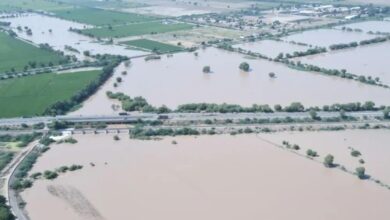Technology, Timely Efforts Divert Hanumangarh Flood | Jaipur News


On Monday, with the water level in Ghaggar siphon was a little more than 20,000 cusec and the government had declared a red alert.
Officials of the water resources department (WRD), which played a pivotal role in controlling the flood this time claimed that the diversion channels for the Ghaggar River helped them the most to control the flood. These diversion channels, including the intake structure of the Indira Gandhi Canal, built in 2001, helped the WRD officials to divert the ‘excessive’ water to enter the Ghaggar siphon.
“Water flowing through Ghaggar siphon finally reaches the Indira Gandhi Canal downstream. In 2001 the government constructed the intake structure to divert excessive water to the Indira Gandhi Canal from the upstream before it enters the siphon. This intake structure of Indira Gandhi Canal and the other diversion channel to the river bed was very helpful this time,” said chief engineer of WRD Amarjeet Singh Meharada.
WRD officials had diverted around 5,000 cusecs of water per day to the Indira Gandhi Canal during the ‘high-time’ and another around 7,200 cusecs to the Ghaggar river bed. This systematic distribution had helped to keep the situation under control.
Officials said these diversions never came into use for the last 22-23 years after being constructed. Advanced technology to know the present level of water at the upstream, present level of rainfall in areas along the upstream and technology to estimate the water that can flow through the Ghaggar siphon in coming days had helped to make preparations in advance.
“On July 8, seeing the condition of water level and rainfall in Haryana and Himachal Pradesh, through GIS technology, we sensed a ‘disaster’ was coming. We started keeping the diversion channels ready by dredging the soils and repairing the gates of the channels. Since we started early, we could make them ready just before excessive water started entering the state,” added Meherada.
A group of 130 WRD engineers from different divisions of the state got engaged in Hanumangarh and the department had even ordered machineries from Bikaner to keep the intake structures ready. Meanwhile officials of the irrigation department said that the present embankments are of high standards compared to those of 1995 as they can resist more water. Also prior information helped them to be proactive and start maintenance work in advance.
On Friday, the water level in Ghaggar River was 25,000 cusecs, which was 1,500 cusecs more than during the flood of 1995. This year, apart from a few low-lying villages, no major concerns took place.




